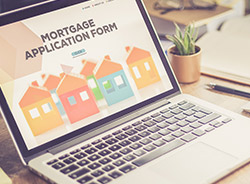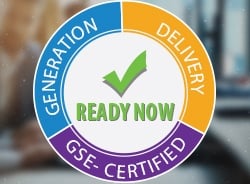DocMagic Integrates eSign Technology with MortgageHippo’s Digital Lending Platform

Integration provides borrowers with a digital mortgage process from POS through closing
TORRANCE, Calif., June 5, 2018 — DocMagic, Inc., the premier provider of fully-compliant loan document preparation, regulatory compliance and comprehensive eMortgage services, and MortgageHippo, a Fintech-driven digital lending platform, announced a seamless eSign integration between their two platforms.
This integration enables MortgageHippo’s lender customers to provide borrowers with the ability to electronically sign documents at any stage of the mortgage process, from point-of-sale to closing. eSignatures eliminate the time constraints and accessibility limitations of manual signatures, thus providing lenders with a faster mortgage process and reduced origination costs. The eSignature process that MortgageHippo provides via DocMagic is as legal and valid as a manual process using printed and wet signed documents.
MortgageHippo provides mortgage lenders with a comprehensive suite of white-labeled web and mobile-ready products that enable a modern, efficient, secure and fully online borrower experience from the point-of-sale to closing.
Lenders can order disclosures directly from their loan origination systems (LOS), most of which are already integrated with DocMagic. MortgageHippo then provides eDelivery of the disclosures to the consumer via the MortgageHippo borrower portal for compliant eSigning using DocMagic’s eSign technology. This service is available for initial disclosures, Loan Estimates (LE), Closing Disclosures (CD) and closing documents.
“If lenders want to stay competitive, they need the tools to satisfy borrowers’ growing appetite for an easy and robust digital experience,” said Joe Dahleen, EVP and CSO at MortgageHippo. “MortgageHippo’s integration with DocMagic allows us to provide those tools to lenders by offering eSignature capability throughout the entire mortgage process.”
“We are pleased to partner with MortgageHippo and offer our mutual lender clients a strong digital mortgage point-of-sale solution that integrates tightly with our platform and LOS partners,” said Steve Ribultan, director of business development at DocMagic. “Integrating with MortgageHippo is yet another step that DocMagic is taking to deliver on the promise of achieving a truly paperless digital mortgage process.”
About DocMagic:
DocMagic, Inc. is the leading provider of fully-compliant loan document preparation, compliance, eSign and eDelivery solutions for the mortgage industry. Founded in 1988 and headquartered in Torrance, Calif., DocMagic, Inc. develops software, mobile apps, processes and web-based systems for the production and delivery of compliant loan document packages. The company’s compliance experts and in-house legal staff consistently monitor legal and regulatory changes at both the federal and state levels to ensure accuracy. For more information on DocMagic, visit https://www.docmagic.com/.
About MortgageHippo:
MortgageHippo works with lenders to devise and implement their digital mortgage strategies using its borrower-centric digital lending platform. The MortgageHippo platform allows lenders to deliver a modern borrowing experience, improve borrower conversions, significantly reduce origination costs and integrate with other innovative technologies. MortgageHippo’s platform is fully customizable to lender preferences and configurable to lenders’ workflows and processes. For more information, visit http://www.mortgagehippo.com.


 The Whole is Greater than the Sum of its Parts When it Comes to Digital Mortgage Solutions and eNotes
The Whole is Greater than the Sum of its Parts When it Comes to Digital Mortgage Solutions and eNotes Tim Anderson is the Director of eServices for DocMagic, Inc. He has held executive management positions with LPS, Stewart, Fidelity, FreddieMac and HomeSide Lending where he ran the eCommerce Division and worked at technology companies like Dexma, Microsoft and Tuttle Information Services. He was also the original founder of the eMortgage Alliance which promoted MISMO standards for delivering legal paperless processes.
Tim Anderson is the Director of eServices for DocMagic, Inc. He has held executive management positions with LPS, Stewart, Fidelity, FreddieMac and HomeSide Lending where he ran the eCommerce Division and worked at technology companies like Dexma, Microsoft and Tuttle Information Services. He was also the original founder of the eMortgage Alliance which promoted MISMO standards for delivering legal paperless processes. National Mortgage Professional Magazine
National Mortgage Professional Magazine  Join us at the 2017 Digital Mortgage Conference in sunny San Francisco, CA! At DocMagic, our goal is to make it easy for you to implement successful Uniform Closing Dataset (UCD) submissions to the GSEs.
Join us at the 2017 Digital Mortgage Conference in sunny San Francisco, CA! At DocMagic, our goal is to make it easy for you to implement successful Uniform Closing Dataset (UCD) submissions to the GSEs. Written by Nathan Batts. This is the part 2 of a blog series.
Written by Nathan Batts. This is the part 2 of a blog series. 
 By Tim Anderson
By Tim Anderson
 Press Release:
Press Release: